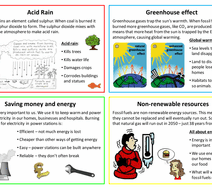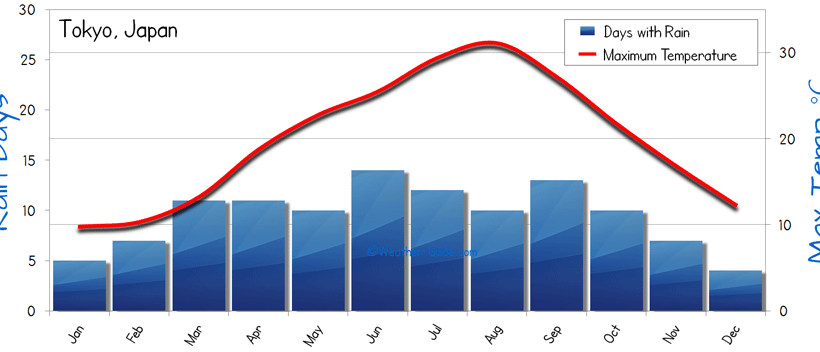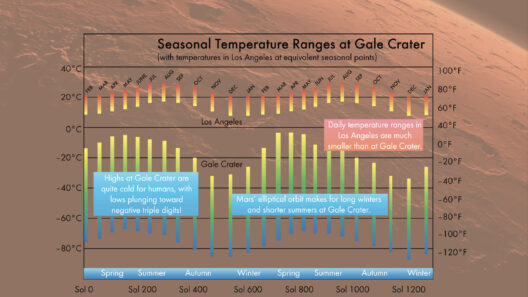What Is the Climate of Tokyo, Japan? Four Seasons in a Mega City
The city of Tokyo, a vibrant mega metropolis, embodies a unique blend of tradition and modernity. With a population exceeding 13 million, it is one of the most populous cities in the world. But how does this bustling urban environment respond to the whims of nature? What can we expect from its climate as the seasons change? By delving into the nuances of Tokyo’s climate, we can better appreciate the rhythms of life in this metropolis and perhaps, contemplate a playful question: Can the city’s climate in any way shape the cultural landscape of this mega city?
Understanding Tokyo’s Climate
Tokyo is classified as having a humid subtropical climate, characterized by hot summers, mild winters, and a significant amount of precipitation throughout the year. The city experiences four distinct seasons, each presenting unique weather patterns that cater to a variety of activities and cultural traditions. This climatic condition is heavily influenced by its geographic location, topography, and the surrounding bodies of water.
Spring: Embracing the Blossoms
Spring, typically spanning from March to May, is a season of renewal and celebration. During this time, the temperature rises gradually, averaging between 10 °C (50 °F) to 20 °C (68 °F). One of the most iconic aspects of Tokyo’s spring is the blooming of cherry blossoms, or “sakura,” which draw both locals and tourists alike to parks and gardens across the city. The delicate pink petals create a picturesque canvas, fostering a sense of community as people gather for hanami (flower viewing) picnics beneath the trees.
However, this season is not without its challenges. With the advent of spring comes the threat of heavy rainstorms, particularly in late March and early April. These deluges can lead to flooding, raising concerns for infrastructure and public safety. To combat this issue, the city has invested in extensive drainage systems and flood management programs. A critical question arises: how can Tokyo balance its appreciation for nature’s beauty with the practicalities of urban planning in the face of climatic variances?
Summer: The Sweltering Heat
As spring fades away, summer arrives in a blaze, lasting from June through August. Temperatures soar, often reaching above 30 °C (86 °F), coupled with high humidity. The discomfort of the heat is exacerbated by the Japanese rainy season, known as “tsuyu,” which typically occurs in early summer. June is marked by overcast skies and torrential rains, which can affect outdoor activities and productivity.
Tokyoites embrace summer through various festivals, including the famous Sumida River Fireworks Festival, where vibrant colors light up the night sky, juxtaposed with the sultry air. Yet, the oppressive heat poses significant health risks, particularly for the elderly and vulnerable populations. With climate change increasing the frequency and intensity of heatwaves, there arises a pressing challenge: what measures can be undertaken to protect the inhabitants from rising temperatures in such a densely populated urban setting?
Autumn: A Tapestry of Color
Autumn graces Tokyo from September to November, offering a reprieve from the sweltering summer heat. Temperatures drop to a comfortable range between 15 °C (59 °F) to 25 °C (77 °F), creating the perfect environment for outdoor activities. This season is marked by spectacular foliage, as trees transform into fiery hues of red, orange, and yellow. Locals often partake in “koyo” excursions, where the vibrant landscapes are celebrated in parks and mountains surrounding the city.
Contrastingly, autumn also prepares the city for typhoon season, as September and October can bring heavy winds and torrential rains. Authorities are continually refining their disaster preparedness procedures to effectively manage these climatic challenges. This raises an essential question for residents: how can communal resilience be fostered amidst the unpredictability of severe weather patterns?
Winter: The Chill of the City
Winter in Tokyo, lasting from December to February, contrasts starkly with the balmy seasons preceding it. Temperatures often hover around 0 °C (32 °F) to 10 °C (50 °F). Unlike many regions in Japan, snowfall in Tokyo is relatively rare but can occur in sporadic bursts, creating a winter wonderland feel. The city’s winter festivities, such as illuminations and holiday seasons, transform urban landscapes into shimmering spectacles.
However, there are ecological implications to consider during this cold season. Increased energy consumption for heating leads to higher carbon emissions, contributing to climate change—a phenomenon that Tokyo, like many global cities, grapples with. As the city evolves, the question of sustainability looms: what innovative strategies can be implemented to mitigate energy consumption in a climate-sensitive context?
Conclusion: Dancing with Nature
Throughout the year, the climate of Tokyo presents a tapestry of experiences that are interwoven with the fabric of its cultural identity. Each season offers distinct challenges and benefits, highlighting the city’s adaptability to environmental changes. As Tokyo faces the realities of climate change, the collective responsibility to foster an ecologically balanced urban environment becomes increasingly paramount.
In contemplating the playful question of how the climate influences the cultural landscape, one realizes that the answer lies in the dynamic relationship between nature and humanity. By embracing sustainability and innovation, Tokyo can continue to thrive as a mega city in harmony with the elemental forces that shape it.







